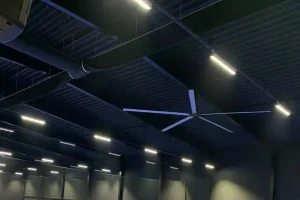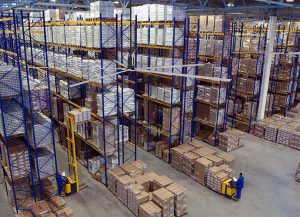Efficient airflow is crucial for cooling in any space, whether it’s for an office, gym, or industrial facility. Proper fan placement ensures that air circulates effectively, keeping temperatures comfortable and energy costs low. But how can you optimize airflow for the best results? Let’s explore.
How to position fans for best airflow?
The key to optimal airflow is placing fans in a way that maximizes air movement while ensuring the even distribution of cool air. Proper fan positioning can improve comfort, enhance productivity, and help control energy costs. Whether you’re cooling a PC or an entire building, effective fan placement is essential to maintaining consistent airflow.

How to position fans for best airflow
Effective airflow isn’t just about using fans but positioning them correctly. When it comes to both industrial setups and PC builds, the strategic placement of fans can significantly impact air quality and temperature regulation. Fans are designed to either push air into a room or pull it out, helping regulate the heat generated by machinery or computer components. By positioning fans in the right spots, you can enhance air circulation, reduce hot spots, and increase energy efficiency.
For example, in a manufacturing facility or warehouse, cooling down machinery and workers is vital to maintain a productive environment. If the fans are not positioned correctly, some areas may experience stagnant air, making it difficult to achieve the optimal temperature across the space.
Fan placement plays a pivotal role in maximizing airflow efficiency. Air circulation is directly impacted by where fans are installed. To optimize airflow, fans should be strategically placed to direct air toward areas of heat buildup and away from areas that are already well-ventilated. Proper airflow prevents air from being trapped in corners, improving overall circulation throughout the space.
One essential tip for improving airflow is placing fans at high points for better hot air removal. Hot air rises, so installing fans near the ceiling or exhaust points will allow them to capture and remove heat more effectively. In larger spaces like gyms or sports centers, strategically positioning fans in the corners or using ceiling-mounted units can maximize the reach of airflow.
When it comes to cooling your PC, fan placement is crucial to ensure that airflow is maximized and the internal components remain cool. Proper cooling is essential to avoid overheating, which can lead to performance degradation and hardware damage.
The best way to position fans in a PC case is to create a balance between intake and exhaust airflow. Typically, you want fans positioned at the front and bottom of the case to bring in cool air and at the rear and top to expel hot air. This layout creates a smooth airflow path, which helps in maintaining an optimal temperature inside the case.
For a well-built PC, consider the airflow as a path of least resistance. Ensure that no cables or obstructions block the airflow paths. Proper cable management and using high-quality fans can further enhance cooling efficiency.
In large spaces like gyms or warehouses, maintaining a consistent airflow is crucial for comfort and productivity. To achieve the best airflow in these environments, you need to consider fan placement carefully.
In gyms, install fans near high-traffic areas and place them in locations where the air tends to get stagnant. Using high-powered ceiling fans in the center of the room can promote even air distribution across the entire area. Similarly, in warehouses, placing fans near heat-generating equipment or machinery can prevent the buildup of hot air, keeping the environment cool.
Additionally, consider the flow of foot traffic. Fans should not be positioned in ways that obstruct movement or disrupt the workspace but should work with the natural air circulation within the room.

Achieve the Ideal Airflow in a Warehouse
Manufacturing facilities often involve machines and equipment that generate significant heat. Proper fan placement is essential to ensure a consistent and even temperature across the space. Efficient airflow can reduce the need for additional cooling systems, saving energy costs in the long run.
In a manufacturing setting, placing fans strategically near heat-producing machines or areas with heavy foot traffic helps maintain a comfortable temperature. This not only improves the working environment but can also extend the lifespan of sensitive equipment. Furthermore, proper air circulation reduces humidity and the risk of moisture buildup, which could lead to corrosion or machine malfunctions.
In commercial buildings, temperature control is vital to maintaining employee productivity and creating a comfortable environment for customers or clients. Proper fan placement helps distribute cool air evenly throughout the building and ensures that different rooms or areas have adequate ventilation.
For a commercial building, fans should be positioned to direct airflow toward common areas or rooms that tend to heat up faster, such as conference rooms or server rooms. Ceiling-mounted fans are an excellent choice for consistent airflow, while portable fans can be moved around as needed to address specific hotspots.
Many individuals overlook the impact that improper fan placement can have on airflow and cooling efficiency. Common mistakes include placing fans in corners, blocking the path of airflow, and installing fans too close to walls or obstructions. These errors can lead to uneven air distribution, creating hot spots that negate the purpose of the fans.
To avoid these pitfalls, ensure that fans are not obstructed by furniture, walls, or other items. Additionally, don’t place all fans in the same area; instead, ensure that they are spread throughout the space to encourage uniform airflow.
Sports centers are typically large open spaces that can accumulate heat quickly, especially with large numbers of people exercising. Proper fan placement can help ensure that the air circulates evenly and the room remains cool.
Ceiling-mounted or high-mounted fans are ideal for sports centers because they can distribute air evenly across the room. These fans help to push the hot air upwards, preventing it from accumulating at the ground level where people tend to be. Fans should also be positioned near entryways to draw in fresh air and expel hot, stale air.

The best fans at the sports center
Fans contribute significantly to maintaining a comfortable temperature in various environments by circulating the air and preventing hot spots from forming. By positioning fans correctly, you ensure that cool air reaches all areas of a space, even those that are typically hard to reach.
While air conditioning systems are great for temperature control, they can be expensive to operate. Fans, on the other hand, are energy-efficient solutions that help cool the air without the high cost of AC units. When fans are placed in optimal positions, they can drastically reduce energy usage while keeping the space cool.
In large open spaces such as warehouses or stadiums, custom fan placement solutions are often required to optimize airflow. By tailoring the placement of fans based on the specific needs of the space, you can ensure that air circulates efficiently, maintaining the desired temperature and comfort level.
Custom fan placement might involve adjusting the number, type, and position of fans to match the specific airflow needs of the space. For example, certain areas might require more ventilation due to heat-producing machinery, while others might need more air circulation to keep people comfortable.
How does fan placement affect airflow?
Fan placement significantly impacts airflow efficiency by ensuring that air circulates freely and uniformly across the space. Proper placement helps avoid hot spots and ensures the even distribution of cool air.
What is the best fan placement for a PC build?
In a PC build, it’s best to have fans positioned at the front and bottom for intake and at the rear and top for exhaust. This creates a balanced airflow system that helps cool the internal components effectively.
Can fans replace air conditioning?
While fans are not as powerful as air conditioning units, they are a cost-effective alternative that can help with airflow and temperature control in most environments, especially when used strategically.
How do ceiling fans help improve airflow?
Ceiling fans circulate air throughout a room by pushing the hot air upwards and creating a uniform temperature. They’re particularly effective in large spaces like gyms, warehouses, and commercial buildings.
Make sure to position your fans wisely to maximize the benefits of airflow, cooling, and energy savings!

Hi, I’m Michael Danielsson, CEO of Vindus Fans, with over 15 years of experience in the engineering and design industry. I’m here to share what I’ve learned. If you have any questions, feel free to contact me at any time. Let’s grow together!